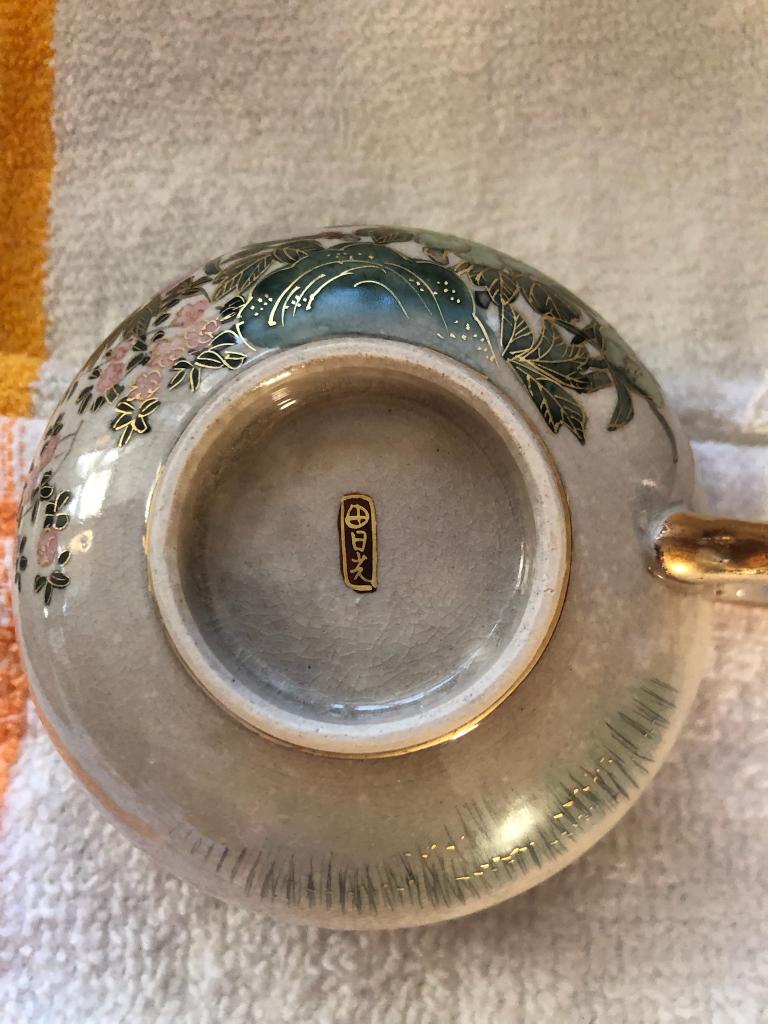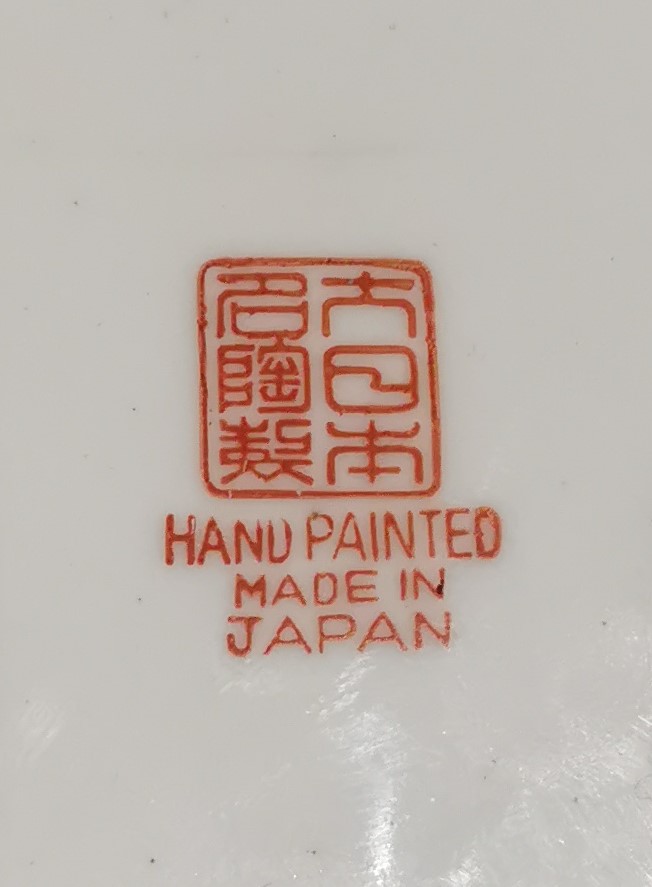Satsuma pottery was made in or around Kagoshima in Kyushu, Japan in the later part of the 19th century through to the early 1920's in Satsuma in southern Japan.
It is also known that in the same location, there were kilns making pottery going as far back as the 16th century - so the location on the southern island of Japan was already steeped in pottery making history.
Why is it called "Satsuma"?
The term Satsuma, derived from the location where they were made then became the way that the pottery was described. A typical piece if Satsuma pottery will be of a yellowy complexion and usually decorated with intricate and minute Japanese figures, landscapes and even dragons.
The designs also feature a form of decoration called moriage which is a term used to describe the use of raised enamel of Japanse pottery.
How was Satsuma Pottery made?
The clay used to make the Satsuma Pottery also differs depending on the location the item was made. For example, the clay used from the Kyushu area gives a darker tone to the pottery where as clay used from Kyoto gives a lighter appearance. The darker clay from Kyushu also allows the crackled glaze to have a darker, more pronounced appearance.
The Satsuma pottery business was also in full effect to mass produce many pieces of earthenware for export to Europe and America and there more perhaps more than 20 factories producing the pottery. Therefore the majority of the pottery items from this location may be low quality and common but there were also makers of amazing fine pottery at the same time too.

The process for making Satsuma Pottery in Japan typically involves several steps:
Preparing the Clay: A mixture of Kaolin, Feldspar, and Bone Ash is used to create the unique, light-colored clay used in Satsuma Pottery. The clay is then molded by hand into the desired shape.
Biscuit firing: The piece is then fired at a low temperature to harden the clay and to remove any excess moisture.
Glazing: A clear glaze is applied to the surface of the fired piece to give it a smooth and glossy finish.
Hand Painting: The piece is then decorated by hand with intricate designs and motifs using enamel paints.
Final Firing: The painted Satsuma Pottery is then fired again at a higher temperature to help fuse the glaze and paint to the surface.
Finishing: Finally, after the last firing, the pottery may be further polished or given a gold or silver trim to complete the decorative process.
This manual process is hard to replicate by using machines, stamped or printed designs. You will only get a true antique masterpiece when it is created, painted and finished by hand.
Why is Satsuma Pottery popular?
There are several things that Satsuma Pottery is famous for and can be identified using these things. The pottery nearly always has a cracked glaze and it also does not ring when tapped like some other china pottery does.
The craqueleuer of the glaze was done on purpose by the maker and is not a sign of the age of the piece as many people think. The early pieces of pottery made in the Satsuma region were covered in a thick heavy glaze and the pieces are very rare and are seldom found at auction.
These earlier pieces do not feature many surface designs. The highly collectible decorated pieces were made in the 19th and 20th century.
Another hallmark of the Satsuma vase, bowl or piece of pottery is the design that adorns the piece. Lavished with scenes of Japan, the images are tiny and intricate and are possibly the most fascinating thing about the vases you can buy.
Images of people, immortals, dragons, flowers, landscapes, birds and events are all hand painted onto the pottery surface and then a light glaze is put over the surface which then cracks slightly. These items are very beautiful pieces and are very collectible.
The factories and makers of Satsuma also produced smaller pieces such as bowls and geisha buttons which are also hand painted with the most amazing intricate images. The small sets of satsuma pottery buttons are highly collectible too and are a perfect addition to any satsuma collection.
Some quick buying tips for the Satsuma collector
When buying a Satsuma bowl, vase or piece if satsuma pottery, the marking on the piece will usually denote the name of the factory or company who has produced the item.
Due to the fact that there were so many makers of this fine china and export pottery, the markings will vary from piece to piece. If the item has the words "ROYAL SATSUMA" or the word Satsuma written in English, then it will be a fake, made for the mass market and possibly made in China.

 |
As an eBay Partner, I may be compensated if you make a purchase
As an eBay Partner, I may be compensated if you make a purchase
As an eBay Partner, I may be compensated if you make a purchase
















